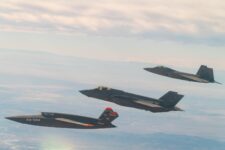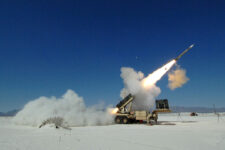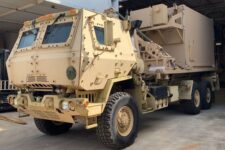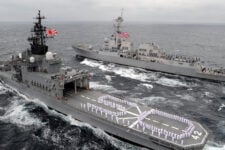
Chinese J-31 stealth fighter
WASHINGTON: The “third offset strategy” is officially just four days old, but the man in charge is already lowering expectations for what it will produce.
Yes, the Pentagon is absolutely seeking “the key technologies we think will give us a particular operational advantage,” said Deputy Defense Secretary Bob Work. Yes, the quest is inspired by Eisenhower’s nuclear “New Look” in the 1950s and the “Offset Strategy” of smart bombs, sensors, stealth, and networks in the 1970s. But no one should expect the Pentagon to find another technological advantage that endures for decades, as they did.
“What’s different about this third offset strategy [from] the last two offset strategies is they were relatively hard to duplicate,” Work told the Defense One conference this afternoon. Today, however, “we have potential competitors who are very, very good in this business and can duplicate — not only steal our IP — but can duplicate things very fast.” (Consider the Chinese J-31 fighter, which looks suspiciously similar to the Pentagon’s most expensive program ever, the F-35).
“So one of the things we’re asking ourselves is, what are the temporal aspects of this competition? It’s going to be much, much different than the last one,” Work said. “The last offset strategy lasted us for four decades. It is unlikely that next one will last that long.”
Much of the new strategy, in fact, depends on upgrades and integrating new technologies and software (such as automation) with existing weapons to create new capabilities, a senior official who took part in many of the meetings that crafted the new strategy said last week. One of the examples to watch may be the Long Range Strike Bomber program, which will comprise a system of systems — a bomber may well be paired with other aircraft, if vague comments over the last year by senior Air Force officials are any indication.
“When we invested in technology” in the past, DARPA Director Arati Prabhakar said at the conference, “we could do that investment with the confidence that we’d have 10, 20, maybe 30 years of technological advantage over any other party. That is not the world that we live in today.”
“In fact, it is really good news for human beings that that’s not the world we live in anymore,” Prabhakar continued. Rather than tech trickling slowly down from the US to other countries, rapid globalization of technology “has raised living standards and improved lives around the planet,” she said. “[But] it creates some really different problems for those of us who worry about national security.”

DARPA director Arati Prabhakar
It’s easy to make America’s dominant position post-World War II your baseline, look at the world today, and “wring your hands,” Prabhakar said. In historical terms, however, such dominance by any one nation is an anomaly.
Indeed, until World War I, civilian inventions drove military technology: the telegraph and railroad shaped the bloody stalemate of the Civil War; the radio, the airplane, the internal combustion engine, and even tank tracks began as civilian tools before they were used on the battlefield. Now the world’s returning to the state where the private sector, not governments, leads the way to new technologies — which places different nations on a much more equal competitive footing.
That’s why changing how the Pentagon procures new technology is as important as what new technology it procures. The acquisition and requirements system has to move faster to get advanced technology in the hands of troops before the adversary catches up. Said Work, “we are going to have to do rapid prototyping and rapid fielding or we will ocontinually lose ground.”
Colin Clark contributed to this story.
No service can fight on its own: JADC2 demands move from self-sufficiency to interdependency
Making all-domain operations a warfighting capability means integrating, fusing, and disseminating a sensor picture appropriate for a particular theater segment, not all of them, says the Mitchell Institute’s David Deptula.



























